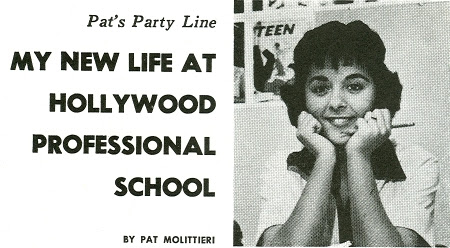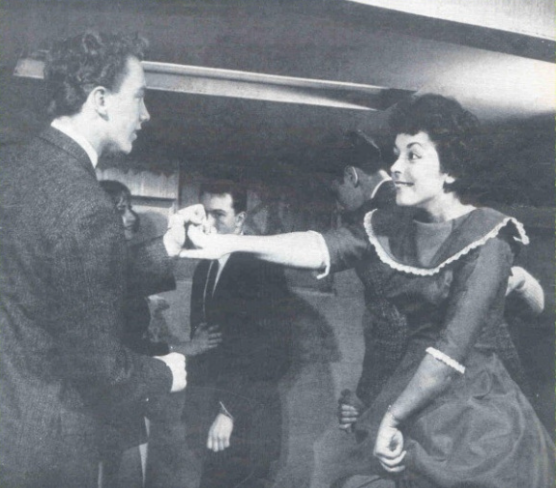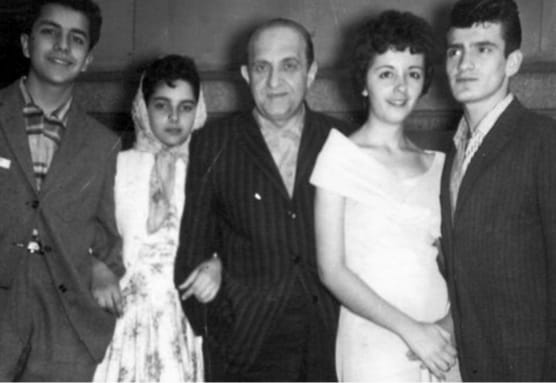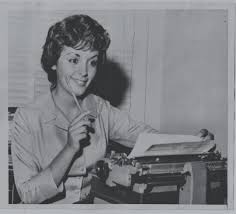
Did you ever walk away from something you were good at something the world applauded you for-just to chase a quiet calling no one else could see? Pat Molittieri did. And in doing so, she gave up the lights of the dance floor for the glow of her typewriter. Her story isn’t just about fame, but about choosing voice over visibility.

In the golden era of American Bandstand, a time when teenagers across America raced home to see who was dancing on their TV screens, Pat Molittieri was more than a familiar face—she was a favorite. With her expressive eyes, confident rhythm, and unforced charm, she quickly rose to become one of the most beloved regulars on the show. Fans adored the way she moved, the way she dressed, and most of all, the natural grace she brought to every segment. She wasn’t just dancing—she was connecting. And yet, while many of her peers dreamed of movie roles or record deals, Pat’s heart beat to a different rhythm.
From her earliest days on Bandstand, there were subtle hints that Pat wasn’t entirely consumed by the glitz. While she never shied away from the camera, there was something thoughtful in her demeanor—something observant. She wasn’t just part of the show. She was watching it all unfold, capturing the feeling, the frenzy, the friction beneath the fun. And when the moment came, she didn’t try to extend her time in the spotlight. Instead, she stepped back, picked up a pen, and started writing.

It was 1959 when she began contributing to Teen Magazine, and from her very first article, readers could sense there was more to this girl than just twirls and turns. Her writing was lively, yes—but it was also deeply sincere. She captured the insecurities of adolescence with rare honesty, weaving humor with vulnerability. While most fan magazines showcased celebrities in a distant, almost unreachable light, Pat brought everything down to eye level. She wasn’t talking at teens—she was speaking with them.
But every choice comes with a price. Rumors spread quickly when Pat vanished from Bandstand. Whispers in school hallways and letters from puzzled fans all wondered the same thing: Why did she leave? According to Pat, once Dick Clark learned she was writing for Teen, she received a call letting her know she was no longer welcome on the show. Clark denied it. The truth? Maybe somewhere in the middle. But what no one could deny was that Pat had found a new stage.
In 1960, Teen Magazine invited Pat to Hollywood and celebrated her arrival with a welcome party fit for a rising star. She rubbed shoulders with Mouseketeers, actors, and pop stars. But more importantly, she did something rare—she wrote about it. Her column after the event didn’t glamorize. Instead, she poked gentle fun at herself, laughed at the dizzying whirlwind of attention, and expressed heartfelt gratitude to the fans who kept writing her every week. She brought her readers into the party, made them feel like they belonged in the same room.

Her voice became a lifeline. At the height of her writing career, she was receiving over 100 letters a day. Some came from devoted readers wanting to share their own stories; others came from teens who just needed someone to listen. Pat never forgot what it felt like to be on the other side of the magazine page—unsure, curious, desperate for someone to say, “Me too.”
What made her writing resonate wasn’t just talent—it was truth. She wrote about stumbling in high heels, not knowing what to say at parties, and feeling homesick miles away from Philadelphia. She shared stories of her time backstage at Bandstand, not as a brag, but as a memory—one laced with both excitement and uncertainty. She never pretended to have it all together. And somehow, that made her feel closer than ever to her readers.

Pat’s departure from Bandstand didn’t end her influence—it expanded it. Unlike many teen idols who quietly faded into pop culture’s rearview mirror, Pat transformed her experience into something lasting. Her columns weren’t just glimpses into a celebrity life; they were reflective journals of growing up. In them, readers found laughter, empathy, and the kind of emotional honesty rarely seen in mainstream media.
Her decision to walk away from the dance floor at the peak of her fame was bold. Some may have seen it as a retreat. But in hindsight, it was an act of self-definition. She understood that identity wasn’t shaped solely by applause, and that a true connection with others sometimes begins when the music stops.
Today, decades later, Pat Molittieri remains a name spoken with both admiration and warmth. For some, she’ll always be the bright-eyed girl who danced in perfect sync with the beat. But for many others, she’s remembered for what she wrote—for how she made them feel heard when no one else was listening.
She was a teen idol who chose her pen over the spotlight. And in doing so, she gave a generation of teenagers the courage to do the same – to find their voice, to tell their story, and to believe that sometimes the quietest steps make the loudest impact.
✨ Did you ever give up something popular to follow a quieter passion? Pat did—and we’d love to hear if you’ve ever made a similar choice. Click the link in the comments to read her full story, then share yours below!
📝 Share your story with us here: